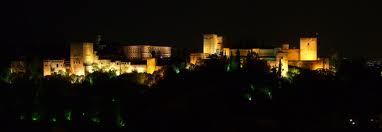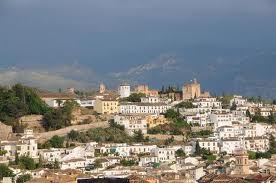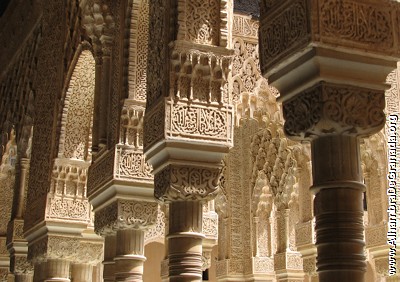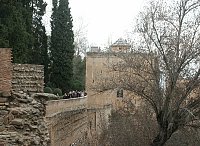Boveda of the Sagrario, Burial Place of KIngs
MARIA ANDRES VALENTIN ESPANA
THE ALHAMBRA







Here is where the Catholic kings decided to be buried. The construction of the Cathedral lasted from the 16th to the 18th century. It was built over the former Central Mosque and shows a melange of Gothic, Renaissance and Baroque motives. It has three exterior facades, the main one being dedicated to the Holy Incarnation A beautiful one, but nearly impossible to get in one picture. We can enter at the Royal Chapel or go to the main entrance to have a look, or also at left go to the Zoco. Most people prefer going to the Royal Chapel first, then outside have a look at the Palacio de la Madraza, then enjoy the facade of the cathedral, and finally enter in the Zoco.
Built on the site of a former Mosque, the cathedral took an incredibly long time it took to build. Building stopped during the plague. To the side of the Cathedral you will find the Capila Real (the Royal Chapel), built between 1505 and 1521. It houses the graves of both Queen Isabel and King Fernando. Buried alongside them are King Felipe (known as Felipe the Good Looking) and Queen Juana (known more commonly as Juana la Loca - Juana the Mad). Future Kings and queens of Spain were buried at El Escorial, near Madrid. The tombs were carved out of marble by the Tuscan sculptor Domenico Fancelli. Price 2.50 Opening times: Mornings (all year) 10:00 to 13:30 Afternoons (July and August) 16:00 to 20:00 Afternoons (rest of the year) 16:00 to 19:00
what a privilege it is to have such a wonderful great, great, great grandfather.
Click here to add text.
IX. Maria Andres Valentin of Espana was third Mark of Spain, and was born in Tolosa of France, February 13, 1774. With pontifical dispensation because of his young age, he was elected Young Man of the Order of San Juan of Jerusalem in 1778. He came to Espana with his father at the time of the French Revolution, residing in Palma, and on our side [the side of Spain], he took part in the war of the Independence of Spain, being found in numerous skirmishes, retiring or withdrawing in 1833. He passed away in Granada February 3, 1838, and was buried in the "boveda" of the Sagrario. He had married the October 2 of 1797 in Zamora, with dona Ana Paula of Taberner (daughter of the Brigadier Colonel Nicolas of Taberner and Gil, and of dona Maria Isabel Fronca and of the Sierra),
being born of this link the following children:
1. Enrique Andres de Espana y Taberner, who follows (the well decorated and honored son by line of inheritance)
2. Carlos de Espana y Taberner, who was Lieutenant General of the Royal Army. (my grandfather) ****
3. Francisco Javier de Espana y Taberner, and
4. Maria Jacinta de Espana y Taberner.
X. Enrique Andres de Espana y Taberner was born in Palma de Mallorca March 23 of 1801, and became a cadet in the I Spanish Army September 30, 1811. He took part in the war of Independence and first Carlist War. In 7 of December of 1831 he obtained seat of office authorizing him to use the title of Baron of Ramefort, which was possessed by his father [who was away fighting]. As the one who would inherit, he was fourth Mark of Espana and was also authorized, by Royal decree of 7 of November of 1838, to use this title in Spain as well as abroad. He arrived in our army at the position of General and was Capitan general of Puerto Rico and Cuba. By Royal decree of 29 of September of 1846, to him it was given the honor of "la Have de Gentilhombre,", and in 8 of November of the following year he was named "Caballero de la Orden de Isabel la Catolica." (Young Man of the Order of Isabel the Catholic). He also was given the award of the Great cross of San Hermenegildo and other decorations. He was succeeded by his son










 | ||||||
 | ||||||
 | ||||||
 | ||||||